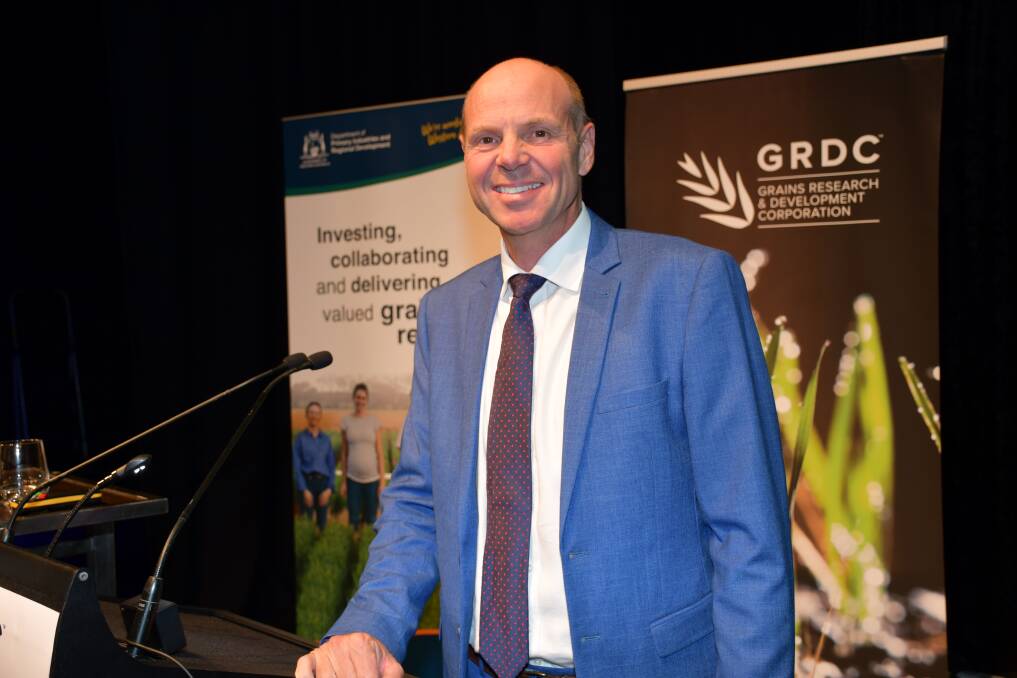
THE Australian grains industry exhibits low greenhouse gas emissions for each tonne of grain produced compared to our competing regions and countries, including the European Union, the United States, Canada, Russia and Ukraine.
Subscribe now for unlimited access to all our agricultural news
across the nation
or signup to continue reading
That's according to a new report, which CSIRO was commissioned to prepare, released last week by the Grains Research and Development Corporation (GRDC).
The report, Australian Grains Baseline and Mitigation Assessment, found that Australian graingrowers are producing low emissions intensity, high quality cereals, pulses and oilseeds.
GRDC chairman John Woods said the report was designed to establish a detailed and robust greenhouse gas (GHG) emissions baseline for the Australian grains sector and explore mitigation opportunities that maintain or increase profitability.
"The risks of climate change and climate variability including low rainfall and increased temperatures to the Australian grains sector are significant," Mr Woods said.
"Yet climate challenge creates new opportunities for innovation and growth for the agricultural sector, and with the right approach, Australia's grain sector can prosper in a changing environment.
"As growers we continue to apply farming practises that result in world-leading low emissions intensity grain production, while maintaining and improving profitability."
Graingrowers in Australia manage about four per cent of the continent, with 22,300 grain farms covering an estimated 31 million hectares, meaning they play an important part in delivering economic and environmental outcomes on behalf of the broader community.
There were multiple drivers for the agricultural sector to investigate low emissions intensity opportunities, including market preferences, financial investment advantages and environmental considerations.
With international markets looking to source grain grown with the lowest emissions, they should be looking at Australian graingrowers.
To identify a GHG emissions baseline for the Australian grain production sector, CSIRO scientists used the 2005 baseline for Nationally Determined Contributions under the Paris Agreement (COP 21).
Their research found:
- Emissions arising from Australian grain production in 2005 were 13.75 million tonnes of carbon dioxide equivalent or 315 kilograms of CO2~e per tonne of Australian grain produced.
- About 60pc of those emissions were direct farm emissions.
- About 40pc were scope three emissions external to the farmgate, which include the emissions produced in the manufacture of the inputs growers use such as fertiliser.
- Onfarm emissions from Australian grain accounted for 1.7pc of all of Australia's national emissions reported in 2005-06.
- Reducing overall net emissions of the Australian grains industry by 2030 is unlikely to be achieved without decreasing Australian production.
- Any reduction in Australian grain production is likely to result in an increase in grain production in regions of the world that are not able to achieve the low emissions intensity of Australia, increasing global grains emissions.
CSIRO senior research scientist Maartje Sevenster, who led the 18-month research initiative and co-authored the report, said the information provided essential baseline data on the current level of greenhouse emissions for the Australian grains industry.
"We focused our assessment of mitigation opportunities on measures that would maintain or improve average production across the sector and found that it is possible to increase production dramatically while keeping net on-farm emissions more or less constant," Dr Sevenster said.
"While this is not the same as reducing emissions, it is a very important finding.
"The next step is to determine what information and tools farmers need to make those modelled scenarios reality."
In the report, CSIRO models six scenarios to explore options for mitigating GHG emissions and the intensity of Australian grain production.
Those included nitrogen applications and management, optimised rotation, green fertiliser products and improved operations efficiencies.
The report indicated the collective adoption of modelled scenarios could reduce greenhouse gas emissions intensity per tonne of grain by up to 15pc.
GrainGrowers chairman Brett Hosking said the report was focussed solely on grain production, however it was also important to consider the whole farm business which will be unique to each grower.
"GrainGrowers encourages more work to be done on different enterprises to ensure growers are armed with the best information as they make decisions about emissions in their business," Mr Hosking said.
"Like all sectors, emission reduction brings challenges for our cropping sector - solutions require investment in data and technology to ensure our growers have the information and the tools they need.
"We encourage the government to partner closely with the grains industry, ensuring as growers we can play our role in reducing emissions."
Want weekly news highlights delivered to your inbox? Sign up to the Farm Weekly newsletter.


